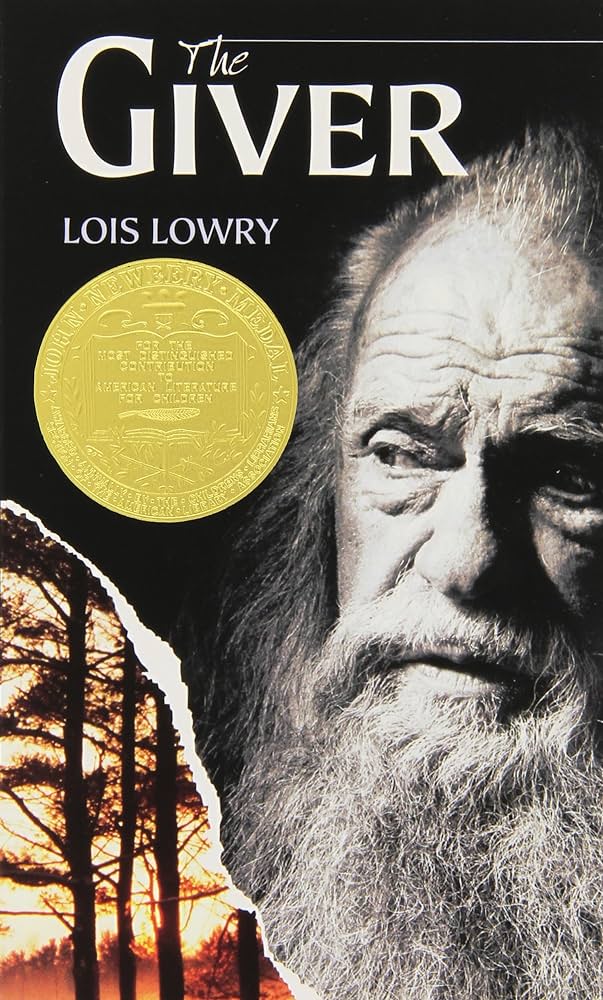The DECODER series — to which SEMIOVOX has invited our semiotician colleagues from around the world to contribute — explores fictional semiotician-esque action as depicted in books, movies, TV shows, etc.
The Giver was my first decoding experience. It was a class assignment and (like most things in my life), I came across parts of the book I did not fully understand, but continued reading to discover more about what was happening.
It turns out that the protagonist, Jonas, who has grown up in a community with strict rules about decorum, behaviors and orderliness, is on a similar journey. In Jonas’s society, differences have been erased and sameness has been prioritized as a tool to generate peace, civility, and community. When members of the community turn 12 years old, they receive their career assignments.
We meet Jonas on the precipice of his coming-of-age ceremony. He’s experiencing shifts that he can’t fully describe. One day, while throwing an apple with his friend, he witnesses something odd:
Suddenly Jonas had noticed… that the piece of fruit… had changed… It had changed in mid-air… Then it was in his hand, and he looked at it carefully, but it was the same apple. Unchanged… [He] had blinked, looked around, and then tested his eyesight… [He] had been completely mystified….
The Giver
We don’t know what the change is, but it is fleeting and only apparent to Jonas. At his age ceremony, Jonas is assigned the “Receiver of Memory” and is paired with the previous Receiver, now known as “The Giver” of memories.
The change Jonas sees is described as a “seeing-beyond” ability — but it is unclear what this means. When he witnesses this change again with his friend Fiona’s hair, the Giver asks him to describe it but he is unable to. To help him find the words, the Giver asks him to recall a “given” memory of a sled ride:
This time the sled had — and continued to have […] — that same mysterious quality that the apple had had so briefly. And Fiona’s hair. The sled did not change. It simply was — whatever the thing was.
The Giver
The “thing” turns out to be the ability to see color — a trait that had been bred out of this society with the goal of establishing uniformity and sameness. Looking at the apple, Fiona’s hair, and the sled, Jonas is seeing red for the first time.
What the Receiver calls “the Capacity to See Beyond” is similar to the process of semiotic decoding. As semioticians, we can see that something is there, but we aren’t always able to put words to it. Like Jonas, we set it aside, hoping to find more patterns to support a wordless hypothesis for something that has not quite formalized in our brains. Similarly, the themes we find can feel fleeting and unsteady — until we name them, at which point they become just as apparent as the red in Fiona’s hair.
In the class where I first read The Giver, I figured out what was happening to Jonas before he did — and before my peers did, too. I found the process of decoding an exhilarating experience then, and I still do today.
DECODER: Adelina Vaca (Mexico) on ARRIVAL | William Liu (China) on A.I. ARTIFICIAL INTELLIGENCE | Tim Spencer (England) on VURT | Ramona Lyons (USA) on BABEL-17 | Rachel Lawes (England) on NICE WORK | Alfredo Troncoso (Mexico) on THE ODYSSEY | Gabriela Pedranti (Spain) on MUSIC BOX | Charles Leech (Canada) on PATTERN RECOGNITION | Lucia Laurent-Neva (England) on LESSONS IN CHEMISTRY | Whitney Dunlap-Fowler (USA) on THE GIVER | Colette Sensier (England / Portugal) on PRIESTDADDY | Jamin Pelkey (Canada) on THE WONDER | Maciej Biedziński (Poland) on KOSMOS | Josh Glenn (USA) on LE GARAGE HERMÉTIQUE | Antje Weißenborn (Germany) on BABYLON BERLIN | Ximena Tobi (Argentina) on SIX FEET UNDER | Mariane Cara (Brazil) on ROPE | Maria Papanthymou (Greece) on MY FAMILY AND OTHER ANIMALS | Chirag Mediratta (India) on BLEACH | Dimitar Trendafilov (Bulgaria) on THE MATRIX | Martha Arango (Sweden) on ONE HUNDRED YEARS OF SOLITUDE | Becks Collins (England) on THE HITCHHIKER’S GUIDE TO THE GALAXY | Ivan Islas (Mexico) on THE NAME OF THE ROSE | Paulina Goch-Kenawy (Poland) on THE SENSE OF AN ENDING | Eugene Gorny (Thailand) on SHUTTER ISLAND & FRACTURED.
Also see these global semio series: MAKING SENSE (Q&As) | SEMIOFEST SESSIONS (monthly mini-conferences) | COVID CODES | SEMIO OBJECTS | COLOR CODEX | DECODER (fictional semioticians) | CASE FILE | PHOTO OP | MEDIA DIET.


